Nine women to watch from U of T Engineering’s class of 2020
One graduate designed tiny robotic scissors controlled by external magnetic fields using a joystick – no cables, wires or any other attachment required. Another used her passion for cybersecurity to help protect nuclear power plants from threats.
And one grad – in a new collaborative engineering education specialization offered by the University of Toronto’s Faculty of Applied Science & Engineering and U of T’s Ontario Institute for Studies in Education – was a medal-winning, world-class runner who competed at the Pan Am Games in Toronto as well as in Venezuela, Qatar and Spain.
They are just three of the nine women who appeared on the faculty’s “Grads to Watch 2020” list – each selected by their home department or institute.
Writers Liz Do and Tyler Irving caught up with the grads as they prepared to take next step in their careers.
Esmeralda Bukuroshi
PhD in chemical engineering and applied chemistry
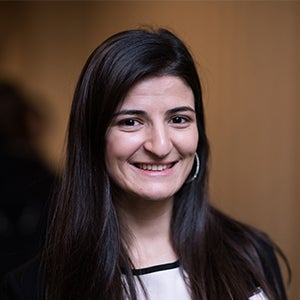
Bukuroshi’s thesis focused on carbon-based molecules that can transform light into electricity. They could one day lead to solar cells with very different properties than those in use today: for example, they could bend or twist, enabling them to be sewn into wearable technology.
A highlight of Bukuroshi’s program was the six months she spent at the University of Copenhagen studying with Professor Mogens Brøndsted Nielsen, an exchange facilitated by a Mitacs Globalink Award.
“I was able to live abroad for half a year while learning and practising new chemical techniques,” she says. “My efforts there expanded the range of possible applications for my materials, and fostered new collaborations with my home research group at U of T Engineering.”
As co-chair of the Chemical Engineering Graduate Students’ Association, as well as the co-founder and vice-chair of the Graduate Engineering Council of Students, Bukuroshi focused on helping her fellow graduate students enhance their professional skills. She created the ChemE poster exhibition and co-ordinated student volunteers for the Engineering Graduate Career Fair, both of which are now annual events.
Following graduation, Bukuroshi plans to work as a policy analyst in the federal or provincial governments, leveraging her research and leadership skills to ensure that government programs are equitably beneficial to Canadians.
“I am looking forward to learning about the data-informed decision-making policy process and the mechanisms that governments follow to invest in innovative research and development while enriching my ability to communicate a wide breadth of issues,” she says.
Brittny Eileen Carter
Bachelor of Applied Science in Materials Engineering
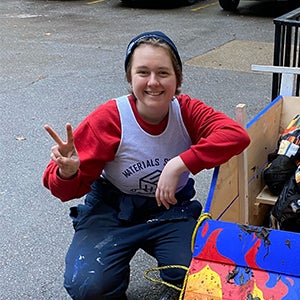
Carter grew up in Russia and British Columbia and is the first engineering student in her family.
“When I came to U of T, I felt disconnected from my support network,” says Carter. “It was a weird time, but I found a second family in MSE (department of materials science and engineering).”
The MSE Club – which Carter volunteered for every year of her program – unites students and faculty members across the small department. She also led materials design for the Concrete Canoe team, designed a new logo for the Skule Archives and drew a regular comic strip for one of the Skule newspapers.
Carter is grateful for the research experience she gained under two materials science and engineering professors. She worked with Gisele Azimi, an associate professor in the departments of materials science and engineering and the department of chemical engineering and applied chemistry, on acid leaching of rare earth elements from industrial waste. With Professor Uwe Erb, she studied how pine needles interact with water and ice, a property engineers could one day mimic to prevent ice buildup on airplane wings.
“Professor Azimi has been a huge inspiration to me, both as a top researcher and as a confident and successful woman in engineering,” says Carter. “Professor Erb not only taught his students how to conduct professional research, but always found time to discuss personal issues with kindness and understanding. He inspires me to try to be better than I was the day before.”
After her third year, Carter did two internships through the professional experience year (PEY) co-op program: one at Environment and Climate Change Canada, where she learned about how various emissions regulations are enforced, and one at Integran, an advanced materials company that Erb co-founded.
“At Integran I worked on researching and developing different nanocrystalline metal coatings for all sorts of applications, from hockey sticks to aerospace components,” says Carter. “I was doing the full range of tasks, from grinding and polishing samples in the lab to developing new engineering solutions. I learned what it really takes to be an engineer.”
Carter is still weighing options for next year. “I have a very long list of different things I would like to do as an engineer, ranging from doing fieldwork somewhere in northern Canada, to building a bridge to helping make Toronto an even better city than it is,” she says. “I think my degree has prepared me to adapt to any challenge.”
Sasha Gollish
PhD in civil and mineral engineering
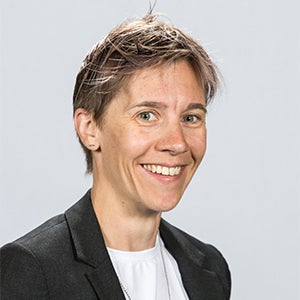
Gollish was one of the first students enrolled in collaborative specialization in Engineering Education, offered jointly by U of T Engineering and the Ontario Institute for Studies in Education. Supervised by Professor Bryan Karney, Gollish studied attitudes toward mathematics among engineering faculty.
“The ability of students to think and communicate mathematically is so much more important than I envisioned,” she says. “This is especially true when it comes to abstract mathematics.”
Outside of the classroom, Gollish is also a world-class runner. In the first year of her PhD, she won the Governor General’s Academic Athletic Excellence award and was named Athlete of the Year for U of T, USports Track and Field, and OUA Track and Field.
All of that academic and athletic work set her up for the Pan Am Games in Toronto, where she won a bronze medal in the 1500-metre race. Since then, she has represented Team Canada at major events every year, from the 2016 Pan Am Cross-Country Championships in Caraballeda, Venezuela to the 2019 World Athletics Championships in Doha, Qatar. In 2018 she was Canada’s national half-marathon champion and placed in the top 30 at the World Half Marathon Championships in Valencia, Spain.
Gollish is currently working as a sessional instructor at U of T Engineering and facilitating learning activities for the Troost Institute for Leadership Education in Engineering and the Engineering Communications Program. She also has her eyes set on the next Olympics, the World Trail Championships and the World Snowshoe Championships.
She has some advice for future students: “Never be afraid to go back to school. I worked in industry for nearly 10 years before I started my PhD. Have the courage to follow your own path to do what you believe is right for you.”
Wei Cheng Hooi
Bachelor of Applied Science in Chemical Engineering
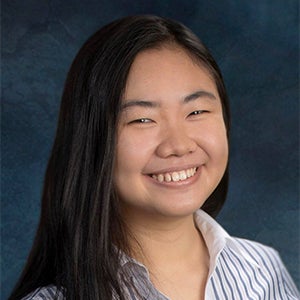
Hooi says that if she could describe her time at U of T Engineering in one word, it would be “priorities.” For Hooi, that meant focusing on sustainability research and taking advantage of opportunities to go global.
Last summer she worked alongside graduate students at the University of Edinburgh as part of a summer exchange, supported by her department’s Dorothy Meldrum Szymaszek Student Exchange Award. She and her team investigated new candidates to replace the current three-way catalyst in catalytic converters for gasoline engines.
“I was involved in most parts of the project, from reviewing papers, to selecting potential candidates, to performance testing,” says Hooi. “I learned recently that these experiments are completed, and I’m now involved in writing the research paper.”
It was a busy summer for Hooi, who also travelled to Vienna, Austria to take part in a one-week artificial intelligence course run by the non-profit Board of European Students of Technology.
“It was an extremely precious experience to be able to attend a course with 40 students from all over Europe,” says Hooi. “I had the chance to learn about different cultures, explore a new city and make new friends from a lot of different countries. It was a totally unique experience, and one I might not have the opportunity experience again.”
During the school year, Hooi’s priority was to not only excel academically but to improve as a leader and communicator. She took part in student clubs such as U of T Toastmasters to practise public speaking and in leadership labs run by Troost ILead.
As a new alumna, Hooi plans to begin her experience in sustainability to the oil and gas industry in her home country of Malaysia.
Onaizah Onaizah
PhD in mechanical and industrial engineering
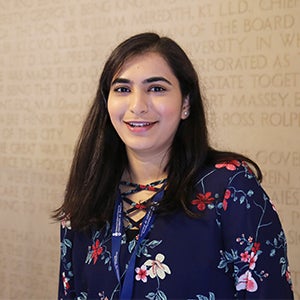
For her PhD thesis, Onaizah designed a tiny pair of robotic scissors that can be controlled by external magnetic fields using a joystick – no cables, wires or other attachments.
“This project was done in collaboration with neurosurgeons from SickKids,” says Onaizah, who was supervised by Eric Diller, an assistant professor of mechanical engineering. “This is a promising start for developing completely untethered tools for remote surgical applications in the brain.”
The prototype device is only about one centimetre long, but Onaizah says that the eventual goal is to reduce it to only half this length. It could be used to make minimally invasive surgery, also known as ‘keyhole surgery’, even less invasive.
Onaizah’s research was supported by several prestigious awards, including the Queen Elizabeth II Scholarship and the Barbara and Frank Milligan Fellowship. She was strongly involved in student government, serving on the Graduate Student Council and the Association of Mechanical and Industrial Engineering Graduate Students (AMIGAS), where she cofounded a student seminar series and organized a research symposium.
“I think it’s really important to give students a chance to hone their presentation skills and develop connections, both within and beyond our department,” she says. “Getting involved introduced me to ideas and people that I would otherwise never have come across.”
Following her thesis defense, Onaizah took up a postdoctoral fellowship in surgical robotics at the University of Leeds. She is working with Professor Pietro Valdastri, a leading researcher in the field of medical robotics.
“Having spent nearly a decade at U of T, it was hard to imagine leaving,” she says. “It was not always easy as a woman in STEM, which can be isolating, but I had plenty of role models guiding my way and paving a path for me.”
Netra Unni Rajesh
Bachelor of Applied Science in Engineering Science
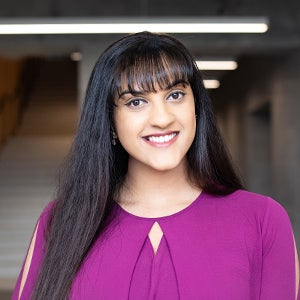
Rajesh’s post-U of T Engineering career is already off to a spectacular start. In May, she was recognized with a 3M National Student Fellowship Award, and was selected as a Stanford Knight-Hennessy Scholar, receiving funding to pursue her PhD at Stanford University and participate in its experiential leadership program.
“It still feels very surreal to be selected as a scholar from over 6,000 international applicants,” says Rajesh. “I am fortunate, honoured and extremely grateful to have received this scholarship.”
The scholarship adds to a long list of achievements for Rajesh. Just a month prior she was recognized with a U of T Student Leadership Award. In 2019, she was a speaker at TEDx Mississauga – her topic was the importance of inspiring children to pursue science, technology, arts, engineering and math (STEAM) fields.
During her summers as an undergraduate, she participated in research exchange opportunities abroad, including at the National University of Singapore and at the California Institute of Technology.
“Both international experiences made me realize that I was keen to pursue engineering on a global scale. These opportunities inspired me to pursue my PEY Co-op abroad as well,” says Rajesh, who completed her placement at the Massachusetts Institute of Technology where she worked in the lab of Robert S. Langer, a world-renowned researcher in biomedical engineering.
Rajesh says her U of T Engineering journey has taught her how to ask the right questions. “In scientific research, a key skill is learning how to ask questions that can propel your work in an impactful direction,” she says. “I’ve developed foundational knowledge in the maths and natural sciences, equipping me to ask important research questions. I am certain this skill will guide me in my pursuit of a PhD and in my strides towards a career in biomedical engineering.”
Anna Shi
Bachelor of Applied Science in Electrical Engineering
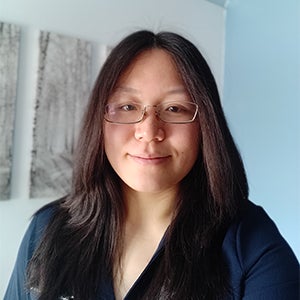
Shi’s passion for cybersecurity crystallized during the summer she spent in the lab of Deepa Kundur, a professor in the Edward S. Rogers Sr. department of electrical and computer engineering. There she studied the literature on adversarial machine learning, which amounts to trying to trick artificial intelligence algorithms by violating the statistical assumptions they are based on.
“I went in expecting to just get my toes wet, but I came out with much more,” says Shi. “Professor Kundur pushed me in various directions to broaden my field of knowledge, and she showed genuine interest in me and my future career path.”
After her third year, Shi spent the summer semester working at Canadian Nuclear Laboratories (CNL) in Fredericton, N.B. where she focused on cybersecurity as it relates to nuclear facilities.
“The cybersecurity division at CNL is new and because of that, I was able to take on more responsibility than is usually given to a summer intern,” she says. “I worked on securing nuclear power plants from cyber threats, taking the theoretical knowledge I’d gained from Professor Kundur and applying it to some real systems.”
The internship was so successful that Shi will return to CNL full-time after graduation. “My job will basically be to prevent bad actors from stealing Canada’s radioactive material and making weapons with it,” she says.
Outside of class, Shi spent a lot of time at the U of T Judo Club, which helped her both physically and philosophically. “Learning judo is also a great metaphor for life. You try, fall, learn from your mistakes, then get back up and try again.”
Her advice to current students is to roll with the punches. “Confusion is the feeling of learning,” she says. “When you really don’t understand something, there’s something more basic that you’re missing. Find that basic thing, learn it, then come back and try again.”
Simonne Varela
Bachelor of Applied Science in Civil Engineering

Varela’s passion for leadership began to shine through in her second year, when she organized a dinner dance for 300 students through her role in the Civil Engineering Club. She would eventually become the club’s chair, focusing on events and workshops related to the health and wellness of her fellow students.
Her duties included acting as a liaison between the department and students, as well as mentorship, a role she further expanded on as part of the committee that organized Orientation Week.
“Through my leadership activities, I was able to gain valuable interpersonal and organizational skills,” she says. “I learned the importance of working in teams and asking for help when needed. The work we conduct in engineering is not easy to take on by yourself.”
After her third year, Varela spent 16 months working for the structural engineering firm IBI Group through the PEY Co-op program.
“I worked on a large variety of municipal projects and gained a lot of design experience,” she says. “I think the biggest lesson I learned was about communication and making sure you were as clear as possible with any of the work you conducted. These skills are equally useful when working in teams on group projects or extracurriculars.”
Following graduation, Varela plans to continue working in building science.
“This field allows me to work in an industry structured around sustainability and community development,” she says. “As an engineer, that’s what I am most interested in contributing my work towards.”
Janice Zhou
Bachelor of Applied Science in Mechanical Engineering

Throughout her time at U of T Engineering, Janice Zhou never forgot how to play.
As co-president of the Spark Design Club, she leveraged the design and fabrication skills of her interdisciplinary team to create fun, interactive displays all over campus. She also worked in product development engineering at the toy company Spin Master as part of the Professional Experience Year Co-op program.
Zhou completed two research terms. With Alison Olechowski, an assistant professor in the department of mechanical and industrial engineering, Zhou analyzed the emotional experience of designers during CAD activities using AI-informed tools. With Fae Azhari, an assistant professor of mechanical engineering, she worked on preventing bridge scour, a phenomenon in which fast-flowing water damages bridge foundations by removing sediments. She helped develop innovative sensing and monitoring systems to catch and correct bridge scour before it’s too late.
“The connections I made through all these experiences helped me grow and develop, both personally and professionally,” she says. “I learned that engineering is not just about math and physics, but also problem solving and working with others, and that I can combine my interests and find my own unique way to contribute.”
Following graduation, Zhou is headed to the Massachusetts Institute of Technology, where she will complete a master’s program in robotics, focusing on robot control and learning. Through her studies and research, she hopes to contribute to the development of autonomous vehicles and assistive robots.
“I am fascinated by the endless possibilities robots provide for improving the quality of people’s lives,” she says.

